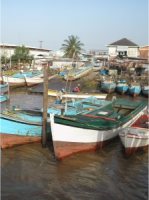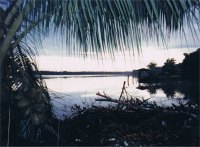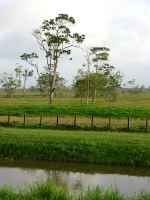
|
|
 |
Guyana is bordered to the east
by Suriname, to the south and southwest by Brazil and to the
west by Venezuela. It is the third smallest country on the mainland
of South America. |
Culturally it is more associated with the Caribbean
than with Latin America and is the only English-speaking country in
South America. It is also one of 4 non-Spanish-speaking nations on
the continent, along with Brazil (Portuguese), Suriname (Dutch) and
French Guiana (French).
 |
The Coat of arms of Guyana was
granted by Parliament on 25 February 1966. It includes a crest
of an Amerindian head-dress symbolizing the indigenous people
of the country, this crest is also called the Cacique's Crown;
two diamonds at the sides of the head-dress representing mining
industry. |
A helmet; two jaguars as supporters holding a pick
axe, sugar cane, and a stalk of rice; a shield decorated with the
Victoria regia lily, Guyana's national flower; three blue wavy lines
representing the three main rivers of Guyana; and the national bird,
the Canje Pheasant.
The national motto, "One people, One
Nation, One Destiny", appears on the scroll below
the shield.
 |
Guyana is an Amerindian word meaning
"Land of many waters". The country can be characterized
by its vast rain forests dissected by numerous rivers, creeks
and waterfalls, notably Kaieteur Falls on the Potaro River. |
| Guyana's tepuis are famous for being the inspiration
for Sir Arthur Conan Doyle's 1912 novel The Lost World. The
country enjoys a diverse, multicultural society, high floral
and faunal biodiversity, prize-winning rum, and Demerara sugar.
Guyana is also known internationally for being the site of the
notorious Jonestown Massacre. |
|
|
|












